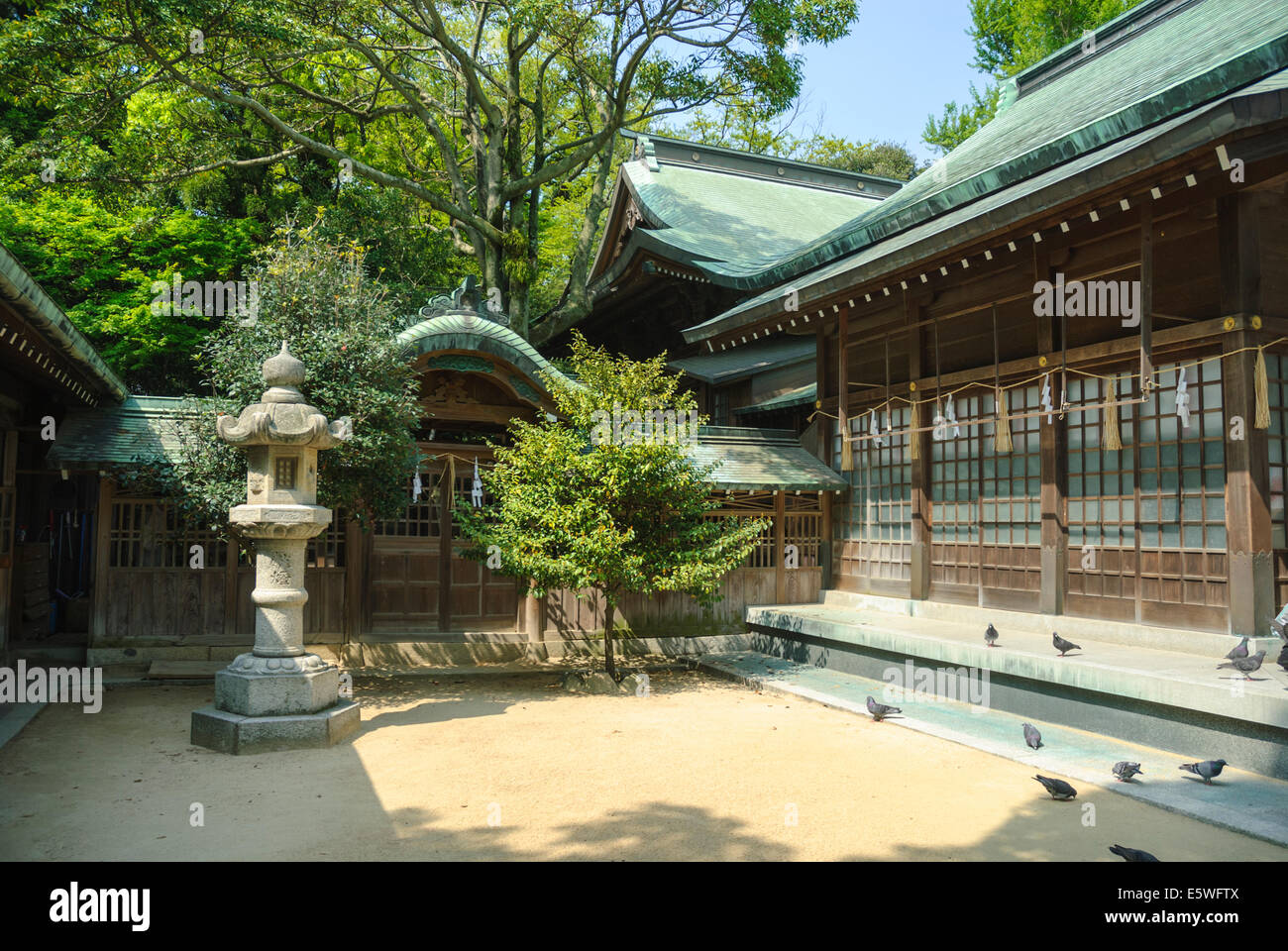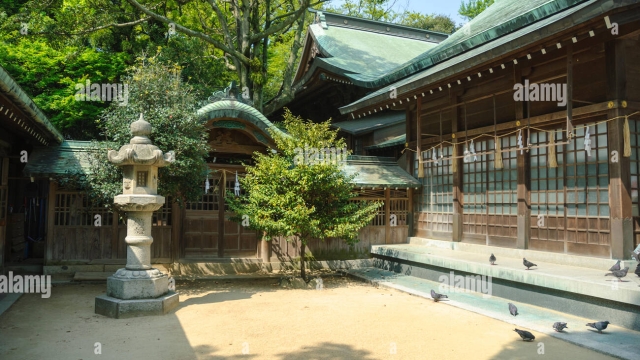
Japan is a land steeped in tradition, where ancient practices intertwine seamlessly with modern life. Among its most fascinating elements is Shinto, the indigenous spirituality of the Japanese people, which is beautifully represented through its myriad shrines scattered across the archipelago. These sacred spaces, often nestled in serene forests or atop sacred mountains, echo the whispers of the ancients, inviting visitors to step into a world where the natural and spiritual realms converge.
Shinto shrines in Japan are not just places of worship; they are living embodiments of history, culture, and community. Each shrine tells its own unique story, often dedicated to specific kami, or spirits, revered throughout the ages. As we embark on a journey to explore these enigmatic sites, we will uncover the rich symbolism, vibrant traditions, and profound spirituality that make Shinto shrines such an integral part of Japan’s identity. Join us as we delve into the heart of this mystical landscape, where every torii gate and sacred tree holds the essence of the past, beckoning us to listen closely.
Historical Significance of Shinto Shrines
Shinto shrines in Japan are deeply rooted in the nation’s history, reflecting the spiritual beliefs of its people. Established as sacred spaces dedicated to kami, or deities, these shrines have served as a vital part of Japanese culture for centuries. The origins of Shinto can be traced back to ancient animistic practices, where natural elements were revered. Over time, these beliefs evolved into a more structured system, leading to the establishment of various shrines across the archipelago.
Throughout history, shinto shrines have not only functioned as places of worship but have also played a significant role in community identity and social cohesion. They often serve as focal points for festivals, rituals, and local traditions, promoting a sense of unity among villagers. The architectural styles of these shrines also reflect historical influences, showcasing the craftsmanship and artistic expression of different periods in Japanese history, such as the distinctive use of natural materials and the harmony with surrounding landscapes.
The significance of shinto shrines extends beyond their spiritual functions; they are also historical landmarks that represent the evolution of Japanese society. As the country underwent periods of change, including the influence of Buddhism and modernization, many shrines adapted while maintaining their core traditions. Today, these shrines continue to attract millions of visitors each year, offering a glimpse into Japan’s rich cultural heritage and the enduring legacy of its religious practices.
Architectural Features and Styles
Shinto shrines in Japan are characterized by their unique architectural styles that reflect the spiritual essence of the Shinto religion. One of the most distinct features is the use of natural materials, such as wood and stone, that harmonize with the surrounding environment. The traditional torii gate, often the entrance to the shrine, symbolizes the transition from the mundane to the sacred. Its simple yet striking design serves as a powerful reminder of the spiritual journey one undertakes when entering the sacred space.
The layout of Shinto shrines typically follows a specific pattern that emphasizes balance and tranquility. Many shrines are built on elevated sites to create a sense of separation from the outside world, often accompanied by serene gardens or water features that enhance the peaceful ambiance. The honden, or main hall, serves as the focal point of worship and is usually adorned with intricate carvings and decorative elements that reflect the local culture and history. This intentional design creates a space that invites contemplation and reverence.
Different regional styles also influence the architectural design of Shinto shrines. For instance, the Ise Jingu, one of the most important shrines in Japan, follows a distinct aesthetic that emphasizes simplicity and purity, with its structures being rebuilt every 20 years to maintain this ethos. In contrast, the Nara period shrines exhibit more elaborate designs, showcasing complex rooflines and detailed craftsmanship. This diversity in styles highlights the rich tapestry of Japan’s cultural heritage and the adaptability of Shinto architecture over time.
Rituals and Practices at Shinto Shrines
Visitors to Shinto shrines in Japan often participate in a variety of rituals that reflect the deep spirituality and cultural significance of these sacred spaces. One of the most common practices is purification, which usually occurs at a temizuya, or water basin. Approach the basin, wash your hands and rinse your mouth to cleanse both body and spirit before entering the shrine. This act of purification sets the tone for respectful engagement with the divine.
Inside the shrine, individuals can offer prayers and wishes to the kami, the spirits or deities worshipped in Shinto. This is typically done by tossing a coin into the offering box, bowing deeply, and clapping hands twice to get the attention of the kami. After clapping, it is customary to bow once more to conclude the prayer. This ritual emphasizes gratitude and reverence, serving as a personal connection between the worshipper and the spiritual realm.
Festivals, or matsuri, also play a crucial role in the cultural life of Shinto shrines. These vibrant celebrations honor various kami and include traditional music, dance, and offerings. Many matsuri are tied to the agricultural calendar and promote community spirit, where locals come together to celebrate blessings of the harvest or significant seasonal changes. Participating in these festivals not only revitalizes ancient traditions but also strengthens communal bonds among residents and visitors alike.
Notable Shinto Shrines to Visit
One of the most iconic Shinto shrines in Japan is Fushimi Inari Taisha, located in Kyoto. Renowned for its thousands of vermilion torii gates that create enchanting pathways up the sacred Mount Inari, this shrine is dedicated to Inari, the god of rice and agriculture. The hike to the summit, which takes about two hours, rewards visitors with breathtaking views and a serene atmosphere, making it a must-see for anyone exploring Japan’s spiritual heritage.
Another remarkable shrine is Ise Jingu, situated in Mie Prefecture. Revered as the most sacred Shinto shrine, it is dedicated to Amaterasu, the sun goddess and ancestor of the imperial family. Ise Jingu is unique due to its traditional architecture and the practice of periodic rebuilding every 20 years, which symbolizes renewal and continuity. The tranquil surroundings and the rituals performed at the shrine offer a profound insight into Shinto beliefs and practices.
Toshogu Shrine in Nikko is also notable and serves as the final resting place of Tokugawa Ieyasu, the founder of the Tokugawa shogunate. The shrine is lavishly adorned with intricate carvings and ornate structures, showcasing the craftsmanship of the Edo period. Surrounded by serene forests and mountains, Toshogu Shrine provides a captivating blend of history, spirituality, and natural beauty, making it a significant site for both tourists and pilgrims alike.
